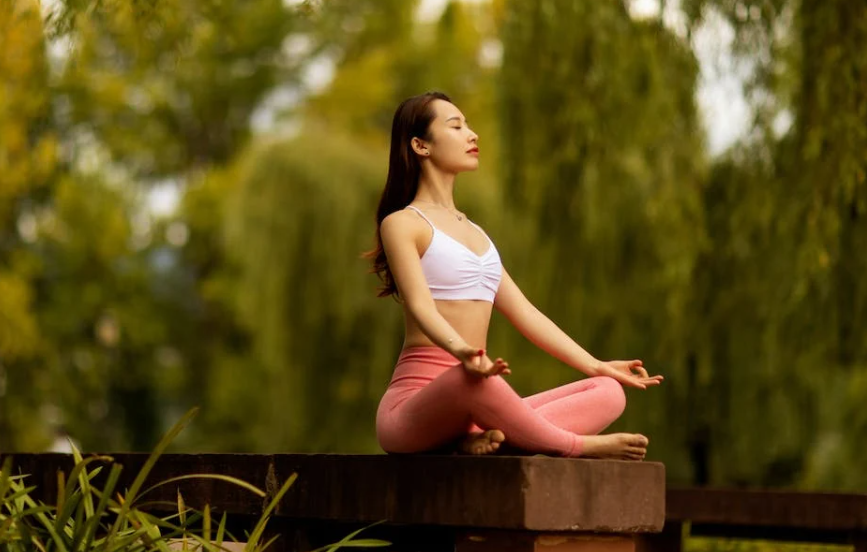Meditation Or Exercise First In The Morning
Learn about the benefits of meditation and exercise in the morning.

Selfpause Affirmation App
Download the app to get 1,000’s of affirmation meditations and everything you need to write, record and listen to your own.
There are many benefits of meditation, including improved mental health. The amount of time you dedicate to meditation is up to you, and the time of day that is most convenient for you. While some people claim there is an ideal time of day to meditate, the most important thing is to find a schedule that works for you.
Pre-workout meditation

A pre-workout meditation helps the body and mind prepare for the workout by calming the mind and focusing on deep breathing. It can also help you tune in to your body and help it stretch. It can also improve your focus and help you reduce stress levels. The purpose of meditation is to clear the mind and declutter your thoughts. There are many types of meditation, including mantra meditation, mindfulness meditation, yoga, and guided meditation.
There are many benefits of meditating before exercising, including improved mood and lessening stress. Meditation can also reduce the risk of injuries during exercise and improve form. Many meditators have also reported improved focus and control while working out. Meditation also lowers cortisol levels, a stress hormone that affects the body and mood.
A pre-workout meditation can be silent or guided. Focusing on your breathing, it can help you to focus and improve your performance. It is also helpful to stretch and do mobility exercises. In some cases, meditating before exercising may even help you to skip these pre-workout steps altogether.
Meditation is like a quiet superpower. Learning to clear your mind and breathe deeply can give you an edge over your competitors. You can also use meditation before a workout to strengthen your resolve to take care of your body and achieve your goals. Ultimately, meditating before an exercise session will ensure that you maximize your time in the gym.
Healium is an app that guides you through guided meditation. Healium guides users through the practice of mindfulness while relaxing the body and improving the alignment of their muscles for optimal recovery. It can also increase your focus and boost your mood. The benefits of using this app are numerous.
Another great use of pre-workout meditation before exercising is to visualize the workout in your mind. Visualize the muscles in your body and the feeling of effort and success. This helps you focus and reduce the fear of failure and self-consciousness before a workout. It can help you to perform better in the weight room and boost your confidence. This simple exercise can take only 5 minutes and can greatly improve your physical performance.
Pre-yoga meditation

Doing yoga in the morning is a great way to start the day strong and focused. It will also leave your mind relaxed and calm. Before you start your yoga practice, make sure you have a light meal, preferably a salad or soup. Avoid heavy meals or foods that contain lots of fiber. Also, avoid eating too many rich and spicy foods.
It’s best to avoid eating any kind of meat, eggs, or garlic before practicing Yoga. Wear comfortable, supportive clothing. When performing the Yogasanas, be sure to breathe deeply, through your nostrils. Also, perform them slowly and gently. Remember that practicing regularly is essential if you want to see results.
The goal of yoga is to unite the body and mind. It involves breathing exercises, physical postures, and meditation. Asanas prepare the body and mind for meditation. During meditation, the mind and body achieve the state of Dhyana, which is indescribable.
When you practice yoga in the morning, you can start by meditating for at least five minutes. This will help your muscles to warm up and focus. You can also incorporate a meditation that helps you to breathe deeply before exercising. It’s important to begin your yoga practice before doing any strenuous activities.
The traditional form of meditation lasts for five to ten minutes. During this time, you close your eyes, focus your sight downward, and relax your body. Place your hands in a comfortable spot. Then, focus your attention on your breathing. Remember to breathe deeply and slowly.
Simple breathing techniques can reduce stress and improve your energy levels. Yoga practitioners use this technique to increase Prana, which is the life force energy that flows through your body. It also increases alertness and energy. For this, you can practice a bellows breath, which can make you feel a little dizzy in the beginning.
Pre-exercise meditation

Meditation is a powerful way to increase your attention and focus during your workout or sports activity. It can also reduce stress and anxiety. The four elements of meditation are sitting quietly, remaining in a comfortable position, focusing on a single object, and being aware of the sensations you are experiencing as you exercise. Practicing meditation before a workout or running session will help you get in the zone and prepare your mind and body for the activity ahead.
To begin your pre-workout meditation, begin by focusing on your breathing and tuning into your body. Try to relax your mind and breathe deeply for five to 10 minutes. Over time, it will become easier to reach a deep state of relaxation. Next, focus on breathing deeply from your belly. Most people breathe too shallowly, but by breathing deeply from the belly, you get more oxygen into your body. It will also help you relax, so your muscles will be more flexible.
Practicing meditation before exercise before your workout will help you achieve your goals faster and more effectively. Regular meditation can help you to stay focused, improve your mood, and manage your weight. Meditation can also help you relax and stretch your muscles. It will also improve the response of your body to exercise.
A study published in Translational Psychiatry found that meditating before a workout relieves tension in muscles and improves performance. It also reduces cortisol levels, a stress hormone that affects your mood. By lowering cortisol levels, you’ll release unwanted stress and be more focused during your workout.
While it might sound like a luxury to some, pre-exercise meditation is actually a powerful tool for your workout. A deep breathing meditation session will prepare your body and mind for peak performance. During the meditation, your mind will clear and you’ll be able to focus on your goals and reaffirm positive mantras.
Meditation is also a powerful way to prevent injury and increase your recovery after a workout. While doing physical exercises, you should try meditating before and after your workout. This will help you improve your focus and your recovery from your workout. As a bonus, meditation can help alleviate your pain after your training session.
Our Top FAQ's
Practicing meditation or exercise first thing in the morning can have a number of potential benefits. For example, meditating in the morning can help set a positive and mindful tone for the day, while exercising in the morning can help energize the body and improve overall physical health. Additionally, starting the day with a consistent routine can help improve focus and productivity.
The effectiveness of a morning routine involving meditation or exercise may vary depending on the individual and their goals. For example, some people may find that meditation helps them feel more calm and focused, while others may find that exercise provides a greater boost of energy and motivation. Ultimately, the best morning routine will likely depend on the individual and what works best for them.
There are a few potential drawbacks to meditating or exercising first thing in the morning. For instance, if an individual is not used to waking up early, they may struggle to maintain a consistent morning routine. Additionally, if an individual is not properly warmed up before exercising, they may be more prone to injury. It is important to listen to one’s body and adjust the morning routine as needed.
Some tips for incorporating meditation or exercise into a morning routine include setting a consistent wake-up time, starting with small and manageable goals, and gradually increasing the duration or intensity of the activity over time. It can also be helpful to plan the morning routine in advance and prepare any necessary equipment or materials beforehand.
The order of activities in a morning routine can affect its effectiveness. For instance, some people may find that meditating before exercising helps them feel more focused and centered, while others may prefer to exercise first to energize the body and mind. Experimenting with different orders and activities can help an individual find the most effective morning routine for their needs.
